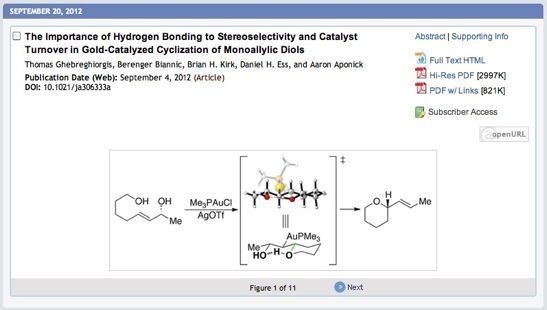Research Interests

Research in our lab is directed at the development of new synthetic methodologies to address difficulties in target-oriented synthesis. To control specificity, nature has evolved enzymes that perform chemical reactions with exquisite chemo- diastereo- and enantioselectivity. Our goal is to develop new small molecule catalysts that exhibit synthetically useful levels of selectivity in new chemical transformations. The significance of this work lies in its application to synthesis. Particular attention is given to bioactive natural products with interesting molecular architecture, wherein the objective is to develop efficient synthetic strategies that facilitate extensive structural modifications to probe biological activity. Students in our group will be exposed to the full repertoire of reactions and learn the analytical skills to plan, execute and optimize reaction sequences.
Ligand Development

We have developed a new concept for increasing the barrier to rotation in biaryls whereby the chiral ground-state conformation is stabilized by π-stacking interactions. This strategy was successfully applied to the design of StackPhos, a new chiral biaryl P,N-ligand incorporating a 5-membered electron-rich heteroaromatic. The ligand is straightforward to prepare and has been demonstrated to be a superb catalyst for the enantioselective A3-coupling and quinoline alkynylation reactions. More importantly, this design concept should be broadly applicable and enable a new class of 5-membered heteroaromatic biaryls to be prepared as catalysts for a range of reactions.

Gold Catalysis

Density functional calculations and experiment were used to examine the mechanism, reactivity, and origin of chirality transfer in monophosphine Au-catalyzed monoallylic diol cyclization reactions. The lowest energy pathway for cyclization involves a two-step sequence that begins with intramolecular C–O bond formation by anti-addition of the non-allylic hydroxyl group to the Au-coordinated alkene followed by concerted hydrogen transfer/anti-elimination to liberate water. Concerted SN2′-type transition states were found to be significantly higher in energy.










